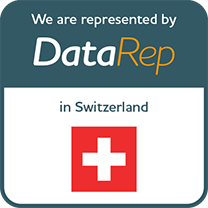People are feeling confused about AI. It’s not surprising. Whatever your problem, everyone and their dog is offering an AI enhanced solution. This leads to uncertainty in the market: too many tools, too little clarity.
We can’t pretend to have all the answers or to know where the AI revolution will take us, but what we can do is shed a little light by being clear on our position on AI and how we can use it to add value for our clients. We are training our AI solution to work with exactly the sort of problems we solve for brands and in doing so we have done a huge amount of work on understanding just where the fault lines lie between AI and our human consultants.
At an overall level, our conclusion won’t surprise you: AI can’t replace human consultants but it can help us do our job faster, more effectively and even more creatively than before. Many businesses are using AI for increased productivity, but we think that is just the beginning. Working with AI we can unlock fresh thinking quicker than ever then using human expertise to refine, shape and connect ideas to business realities.
AI versus HI isn’t the whole story
We often see the discussion around the role of AI vs. the role of humans characterised as ‘AI vs. HI’ – ‘artificial intelligence vs. human intelligence.’ We think that doesn’t paint a full picture of what human consultants bring to the process. We are so much more than intelligence alone which is why we think AI won’t be replacing us any time soon.
We would argue that the ‘I’ in HI can stand for more than just intelligence:
- Intuition: we believe that a great insight or a great idea is more than just the sum of its parts – you know it is great because you can feel it in your bones
- Implications: AI can generate ideas and prioritise them according to a general understanding of the world, but our people work to understand the implications within the specific context of our client organisation
- Interactions: it’s not enough to uncover insights and create new ideas and concepts; our client organisations have to turn insight into action and that means interacting with people to create and manage change – something that only humans can do.
- Inspiration: creating change in our client organisations means moving people – literally and figuratively – and our human consultants can bring the emotion, energy and excitement to make that happen.
- Impetus: creating change also takes leadership – currently not available from AI
It’s unhelpful to imagine a conflict – AI versus HI – as both bring so much to the party. Our experience (and our human intuition) tells us that AI plus HI is the great idea and that it will deliver much more than just the sum of its parts.
AI plus HI in practice
Our work can be broadly categorised into three types of project.

Generative projects
What: Projects that involve creating content such as ideas, platforms, trends
AI plus HI: AI can be used to great advantage in generative projects as it can generate ideas fast and at scale, and can also be used to bring them to life effectively using image generation. Humans then work to anchor the ideas to commercial and brand realities.
Examples of generative projects:
- Trends
- Creating platforms
- Ideation
- Creative exploration
- Strategic projects

Analytic projects
What: Projects that involve piecing together information from disparate sources and finding meaning.
AI plus HI: AI can be used to some extent in analytical projects to rapidly sift through and code large quantities of information. Humans then work to anchor the ideas to commercial and brand realities.
Examples of analytic projects
- Semiotics
- Category understanding
- Segmentation
- Demand Spaces

Strategic projects
What: Projects that answer the big questions such as, how do I grow my brand, how do I innovate, how do I gain market share?
AI plus HI: These projects are largely human as they are much more about creating change in client organisations and involve aligning ideas to commercial realities and brand ambitions as well as creating energy and excitement around ideas, forging strong relationships, influencing stakeholders and taking them on a shared journey
Examples of strategic projects
- Growth strategy
- Brand strategy
- Innovation strategy
- Category strategy
How do I know if AI is right for my project?
As well as project type, there are five other factors that help us determine whether to use AI in a project, as follows:
- Complexity: by complexity we mean bringing together high volumes of information, people and ideas and resolving conflicts and contradictions to answer multi-faceted or ill-defined questions. At the other end of the scale are projects that are simply defined and have a clear brief. These simply-defined projects may still be complicated – that is, they may involve high volumes of information – but they are not complex. At present, AI needs a very clear brief and a simple, well-defined question to maximise how it performs.
- Risk: AI can hallucinate – make up things that don’t exist. Despite technologies such as RAG which can mitigate against this tendency to an extent, anything generated by AI still needs checking. This makes AI suitable for projects where the risk of a mistake is low. For example, where AI is coming up with new ideas to feed into concept development, the risk is only that it doesn’t come up with exciting ideas. There is no way that an idea can be wrong – it is only an idea. Conversely, in analytical projects, for example, AI could produce codes based on false information, making it a riskier option.
- Stakeholder engagement: broadly speaking, the more stakeholder engagement a project requires, the less suitable it is for AI. Understanding politics and personalities as well as building relationships and creating emotion are all tasks for human consultants at present.
- Budget: every project is a compromise between the ideal methodology and the reality of the budget. AI has the potential to save vast sums of money so judging the point at which AI stops being useful and human time is needed to extract value will be crucial – and not necessarily clear cut.
- Time: similarly, AI has the potential to save vast amounts of time. We have been impressed by the speed with which our AI tool, when given careful and detailed prompts, can generate ideas at massive scale. The risk is that as the use of AI becomes more widespread, project timescales will shrink accordingly and the time for the necessary human input will be squeezed.
I’ve got a project for The Forge – am I buying AI, HI or both? And how do I know?
It’s early days still with AI and there will be lots of new developments coming down the track. But we are blown away by what is already possible. We will continue to work with our clients to bring the best blend of AI and HI to our projects, to use AI only where it can add real value and to be totally transparent about our processes. If you have any questions about anything discussed in this article then get in touch.
Image credits: Thank you to @dragos126, @adamaszczos, @startaeteam and @rocknrollmonkey at Unsplash


